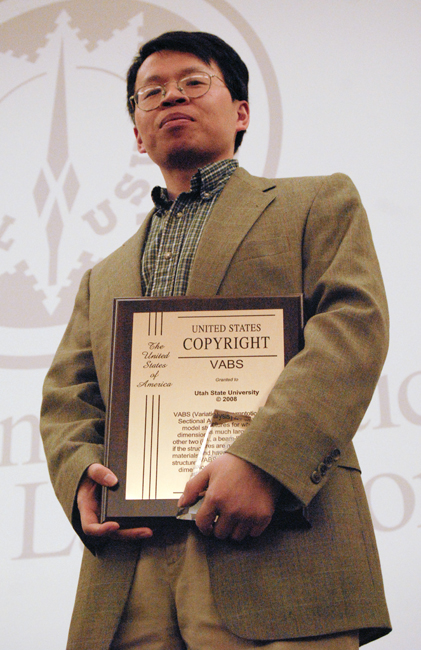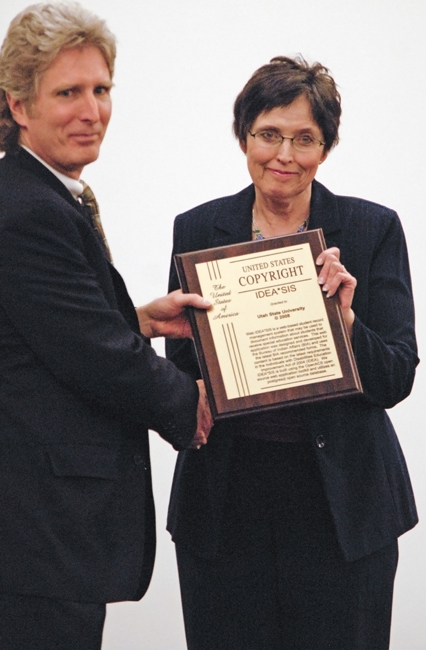Innovators and inventors honored
Innovative research and entrepreneurship by USU professors in fiscal year 2009 was recognized at a ceremony at USU’s Innovation campus Thursday hosted by the Technology Commercialization Office (TCO).
The title of Entrepreneur of the Year was awarded to engineering department associate professor Wenbin Yu for the commercial application of his Variational Asymptotic Beam Sectional Analysis software (VABS). VABS is used for the design and analysis of aerospace structures.
Technological Entrepreneur of the Year went to Professor Claire Batty for his aerospace thermal management research and new company Thermal Management Technologies, LLC. Batty’s company is the long awaited first spin out company of the Space Dynamics Laboratory, said Ray DeVito, TCO director.
In addition to the awards, professors were recognized with plaques for receiving patents from the U.S. Patent Office in 2009.
Seven new patents and two promised patents were awarded to USU researchers so far this year, DeVito said.
Ten groups of researchers were honored for commercializing their copyrighted research in areas such as differential geometry, computer-aided design, debt management software and teacher training material.
Karl White’s HI*TRACK software received an award for highest cumulative licensing income.
TCO commercialization associate Alan Wood presented Adrienne Akers with a plaque for her copyrighted commercial software Universal Application System. The software simplifies online applications for state programs. Wood praised Akers for setting up her company in Cache Valley.
DeVito said 2009 has been a record year for research at USU in terms of patent applications and research commercialization. He said income from licensing USU inventions is at a record high so far. DeVito said the work of the TCO is cumulative and takes a sustained effort to see payback.
“Nothing happens overnight,” he said. “It takes time to go from ideas to royalties.”
The USTAR Grant Program will eventually pay back the community in job opportunities, DeVito said. Income from commercialized USTAR funded research will go back to fund new research in a self-sustaining process, he said.
Two research organizations funded by the USTAR initiative gave presentations about research with particular promise for commercialization.
Alan Marchant from the Center for Active Sensing and Imaging (CASI) explained ongoing research using technology to detect and analyze airborne particles, aerosols and wind patterns. The research could create technologies and methods for optimum placement of wind energy generators, mapping the earth’s surface and describing wind patterns real time in 3-D, he said.
Leland Foster, executive director of Synthetic Bio-Manufacturing Center (SBC), said his team uses genetics to implant modified DNA into common cells such as E. coli to grow valuable chemicals. These chemicals could be used to form products such as biodiesel and bioplastic, he said. The process could also create compounds which currently cannot be synthesized easily in the laboratory.
SBC’s mission is to find commercial applications for its research, Foster said.
DeVito said the income from commercialized research is split between researchers and the university.
“It pays to invent,” he said.
–butler.brendon@gmail.com


